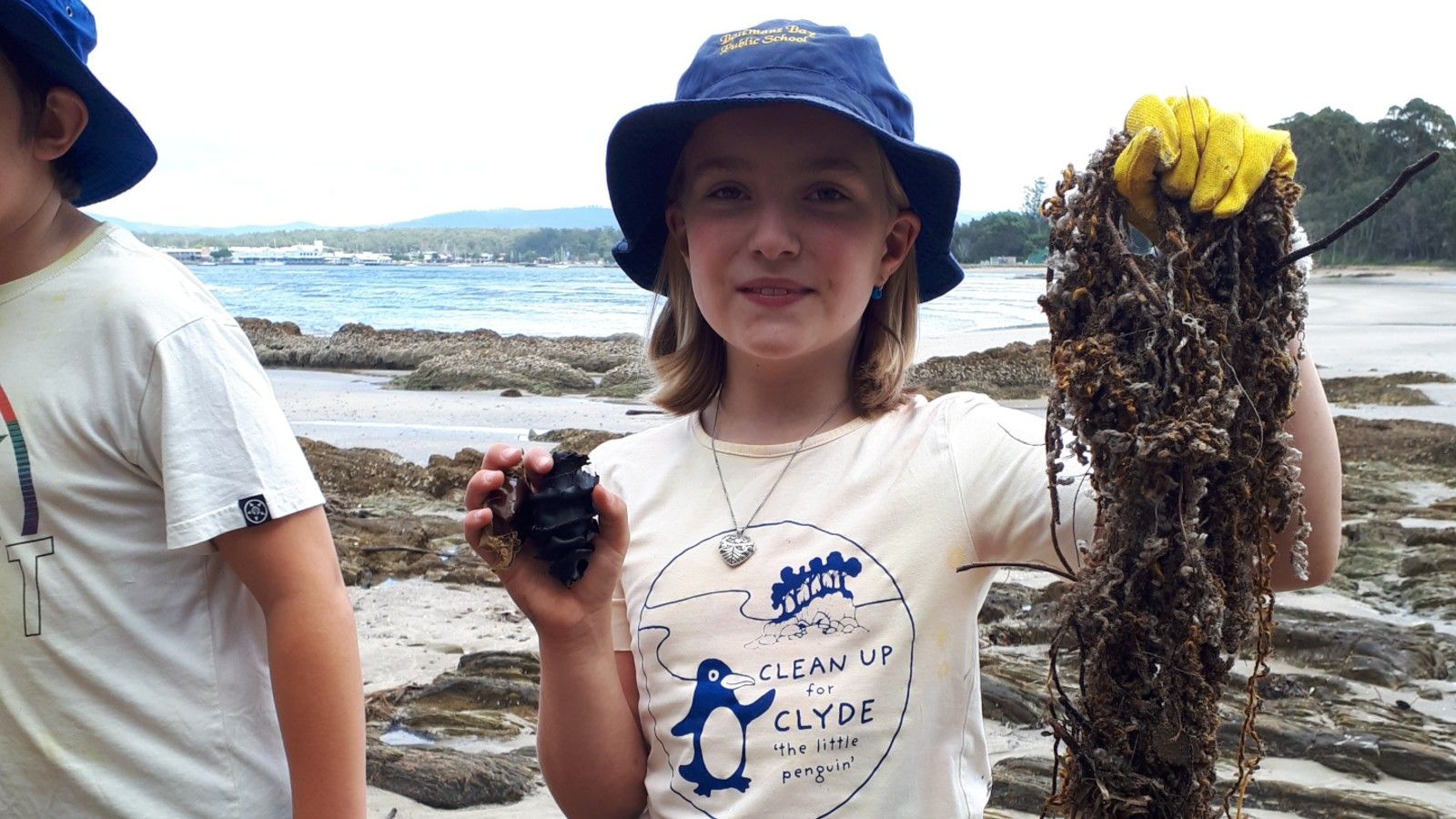Marine debris
Marine debris includes all man-made materials released into the ocean or other water environments.
Litter that ends up in or near the water can be very damaging to animals and the environment. There are things we can do each day to help stop debris entering marine environments in the first place.
If you like to enjoy our beautiful beaches, explore rock platforms or fish, learn about the ways you can help our local marine environment.
Marine Debris Working Group+
The Eurobodalla Marine Debris Working Group explores ways to address debris that threatens our marine environment.
The group includes divers, fishers, surfers, school groups, conservation groups, and scientists. They work together to:
- clean-up debris from our beaches
- track where the debris has come from
- work out ways to stop debris from entering the marine environment.
The group is always interested in new members. It's easy to get involved, and you can add the marine debris you collect to the Australian Marine Debris Database.
Clyde the Little Penguin Project+
Clyde the Little Penguin Project is a federally funded initiative. The project aims at improving the habitat of little penguin colonies on the Clyde Estuary. The work involves removing marine debris and weeds from the little penguins' habitat.
Eurobodalla students can get involved in this work at penguin sites along the foreshore of the Clyde River, Batemans Bay. The students collect data about the items they find in the clean-ups using the Australian Marine Debris Database. They then use this information to develop educational materials. This helps the local community to reduce its impact on the little penguins' environment.
Fishing tackle debris bins+
Fishing waste and discarded tackle have a large impact on the ocean and surrounding wildlife. Fishing tackle remains in the aquatic environment long after it's thrown away. It can kill and injure marine life and pose a safety threat to children and pets.
Birds are most likely to suffer from discarded fishing line. They often visit fishing areas and the line is invisible to a bird looking for food. The line can entangle around a bird's leg which tightens and causes the limb to swell. Fishing line can't expand, so it cuts into the bird. This causes great pain and restricts the bird's ability to move and feed. After time, the line will cut through the bone and amputate the affected part.
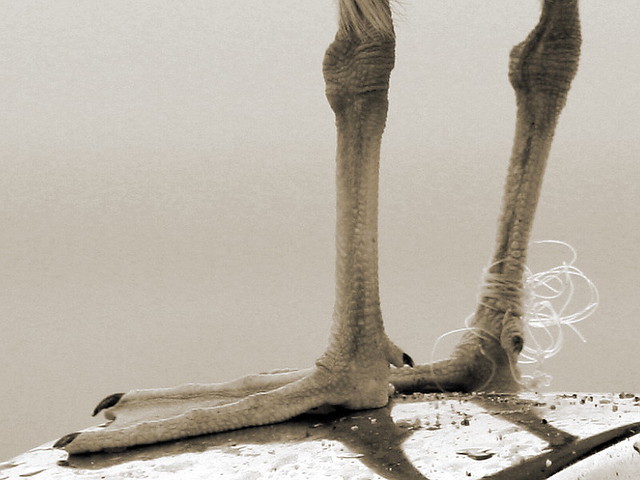
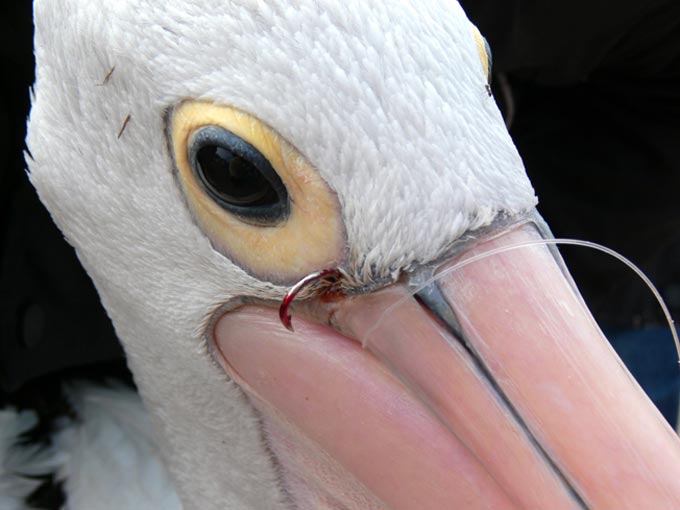
Purpose of fishing tackle debris bins
Once you're aware of the problem with fishing tackle, the solution is easy: pick it up and put it in the bin.
We have installed fishing tackle debris bins at popular fishing locations around the Eurobodalla. The bins keep unwanted fishing tackle secure, so it's disposed of in a safe way. They also encourage anglers to keep their fishing spot tidy, which reduces litter. It also creates a better fishing experience.
The purpose of the bins is to:
- protect animals from injury and death caused by fishing line entanglement, hooks, eating fishing tackle debris, etc,
- raise awareness about the hazards of fishing line and tackle, and the importance of disposing of fishing waste the correct way
- protect environments that are in direct threat from waste build-up and pollution
- ensure we keep local vegetation free from fishing line litter.
We've also installed fishing tackle debris bins at popular visitor destination areas. These include camping grounds, tourist parks and boat ramps. This encourages visitors to be more aware of the impacts that discarded fishing tackle and bait bags has on wildlife and the environment.
Be a responsible fisher
You can take simple steps that will reduce the impact of your fishing experience on the marine environment:
- Use the fishing tackle debris bins provided.
- Use environmentally friendly fishing tackle. Examples include lead-alternative sinkers, biodegradable fishing line, and non-stainless-steel hooks. Traditional fishing materials can take years to break down in the environment. By making the switch you'll help reduce the impact snagged lines and hooks have on marine life.
- Consider the correct gear for the fish you are after, such as hook size.
- Dispose of fish waste in a responsible way.
- Dispose of all fishing and/or general litter in the bin or take it home with you.
- Use circle hooks as these increase the chance of survival for fish released.
- Avoid using nets.
- Collect and bin any discarded fishing line, other fishing gear or rubbish. If there are no bins available, take it home with you.
- Be on the lookout for birds that may take bait.
- Don't leave baited hooks and lines unattended or out of water and avoid bird feeding areas.
More information
Get involved and make a difference
We need more volunteers to empty and monitor the fishing tackle debris bins. Your help will allow us to place more bins in the community. If you'd like to get involved, please contact our sustainability education officers:
Cigarette butts+
The National Litter Index reports that cigarette butts (and their packaging) are the most-littered item in Australia.
- Australians discard over 1.3 billion cigarette butts every year.
- Littered cigarette butts can cause bushfires.
- When it rains, cigarette butts in streets and gutters travel via the stormwater into our beaches and rivers.
Cigarette butts in our waterways can cause a serious environmental hazard.
- Cigarette butts can take up to 12 months to break down in freshwater and up to five years in seawater.
- Birds and aquatic animals can mistake the butts as food. This can result in serious digestive problems that may lead to death.
- Butts have been found in the stomachs of young birds, fish, sea turtles and other marine creatures.
- Toxic chemicals such as lead and cadmium trapped in the cigarette filter can leach out in water. The chemicals found in one cigarette butt can contaminate about 7.5 litres of water within one hour.
Smokers can be part of the solution
Smokers can help by:
- carrying a portable ashtray (an empty mint tin is perfect for this)
- using smoker stations and bins provided in public places. Many retail centres have butt bins in strategic places where people can smoke
- avoiding smoking on our beaches and near waterways at all times
- disposing of all cigarette butts and ash in your household red lid general waste bin. Make sure you extinguish your butts before you put them in the bin.
Offences relating to cigarettes that carry fines include:
- flicking cigarettes from your vehicle
- stubbing out and flicking butts onto public areas such as:
- footpaths
- roads
- gutters
- bus shelters
- outside office buildings.
You can also receive a fine for disposing of your cigarette butt in the wrong way under the Protection of the Environment Operations Act 1997.
Report a cigarette butt tosser
If you see someone throwing a cigarette butt from a car, you can report the incident to our rangers on 4474 1019 or online to the NSW EPA. You will need the following details before you submit a report:
- your contact information
- vehicle registration details (number, state)
- description of the vehicle (type, make, model, colour)
- date, time and location of the incident
- part of the vehicle the cigarette was thrown
- details of the occupant of the vehicle who threw out the cigarette
- whether the cigarette was lit at the time.
More information
For more information about littering (cigarette butts), please contact our environment team:
- T: 02 4474 1000
- E: Environment team
Alternatives to releasing balloons+
Restrictions on balloon releases
- You are not allowed to release balloons at Council events or in Council-managed reserves.
- It is illegal to release 20 or more gas-inflated balloons at or about the same time. The balloons should not have any attachments. If you release over 100 balloons, the penalty is much higher, and you could receive an on-the-spot fine.
Balloons and the damage they cause
Balloons are often used for special occasions such as launches, birthdays, weddings and funerals, but they don't stay in the sky forever. A 2016 CSIRO study found that balloons are in the top three most harmful pollutants threatening marine wildlife.
About 95 per cent of released balloons burst in the atmosphere and litter small pieces of plastic to the earth. The remaining five per cent do not reach a high enough altitude to burst. These drift hundreds of kilometres before they land.
When balloons or parts of them fall:
- pieces can land in the sea where birds and marine wildlife mistake them for food
- they can block animals' digestive tracts, which can be fatal
- wildlife can get tangled in the ribbons and strings. This restricts their movement and ability to eat, which causes them to drown.
Use environmentally friendly options
With so many options available, it's easy to stop using balloons. Some fun alternatives with less impact on the environment include:
- Blow bubbles: make a bubble solution so you can blow bubbles and let the breeze carry them skyward. Don't forget to dispose of the plastic receptacles.
- Virtual balloons: consider a virtual balloon release online with your family and friends.
- Ribbon wands: there's something whimsical and ceremonious about waving ribbons through the air.
- Plant native trees or seeds as a symbol of new beginnings and a gift to the environment.
- Light candles to remember a loved one or celebrate a new life. Candles made from environmentally friendly materials are a good option. They also provide an easy way to celebrate or commemorate an occasion.
- Save your decoration budget and donate to your favourite cause or charity.
- Hang some bunting or pom poms on your door or gate instead of balloons.
- Fly streamers, banners or flags and let the wind make them dance.
- Floating flowers: float your loved one's favourite flowers or petals down a stream.
- Flying kites at funerals and in memory of the departed is a tradition that is thousands of years old. Making and flying kites is a way to honour your loved one. It often brings feelings of tranquillity and peace to those grieving.
- Coloured lights or a mass gathering of people to create a shape, word or image can be unifying and beautiful.
- Buy or make your own pinwheels. A pinwheel can be a reminder of the eternal human spirit that resides in each of us.
- Hold your event in the garden and let the native plants be your decoration.
About biodegradable balloons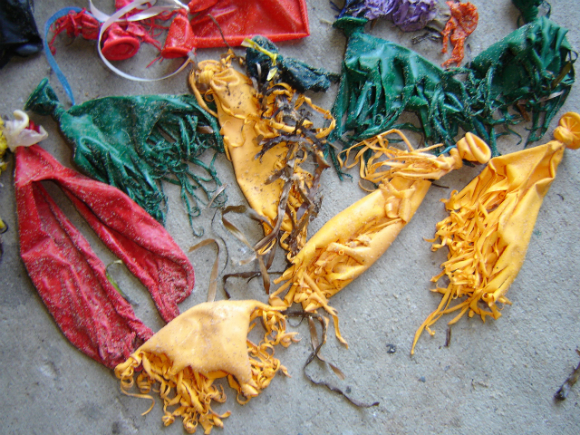
In reality, there is no such thing as biodegradable balloons. The term 'biodegradable' means that an item will break down into smaller pieces when exposed to microorganisms in the environment.
Balloons can take years to break down, even the biodegradable ones. This allows plenty of time for the balloons to travel. Many animals can also mistake balloons for a tasty snack or get entangled in them. Degraded balloon parts can also be harmful to animals that ingest them.
While natural latex may be biodegradable, chemicals and dyes added to balloons during manufacturing can make 'biodegradable' balloons remain in the environment for many years. Balloons released into the environment, even for a short time, can cause harm.
Many animals mistake burst biodegradable latex balloons as food. This causes intestinal blockage and death. Sea turtles are especially at risk because they prey on jellyfish and burst balloons look very similar.
More information
- Tangaroa Blue: Balloons fact sheet
- Balloons Blow: Don't let them go
- Pro-Environment Balloon Alliance: Balloons and the environment
Drain Buddy Program+
We have installed stormwater drain baskets (Drain Buddies) along areas of our coast next to waterways. The Drain Buddy is a heavy-duty basket that captures street litter, sediment and organic debris before it reaches the waterway.
Litter dropped on roadsides, pathways and gutters usually ends up in the stormwater system. In some areas, we have installed Gross Pollutant Traps (GPTs). GPTs catch stormwater pollution before it enters waterways. GPTs act like a filter, catching litter but allowing water to flow through. Not all areas are suitable for GPTs, but Drain Buddies are ideal for these areas.
Our staff clean and record all the litter in the Drain Buddies four times a year. We then record the findings on the Australian Marine Debris Initiatives database. This allows us to track how well the Drain Buddies are working and identify the items we're capturing. We can then look at the source of the litter and develop programs that target this source and eliminate it.
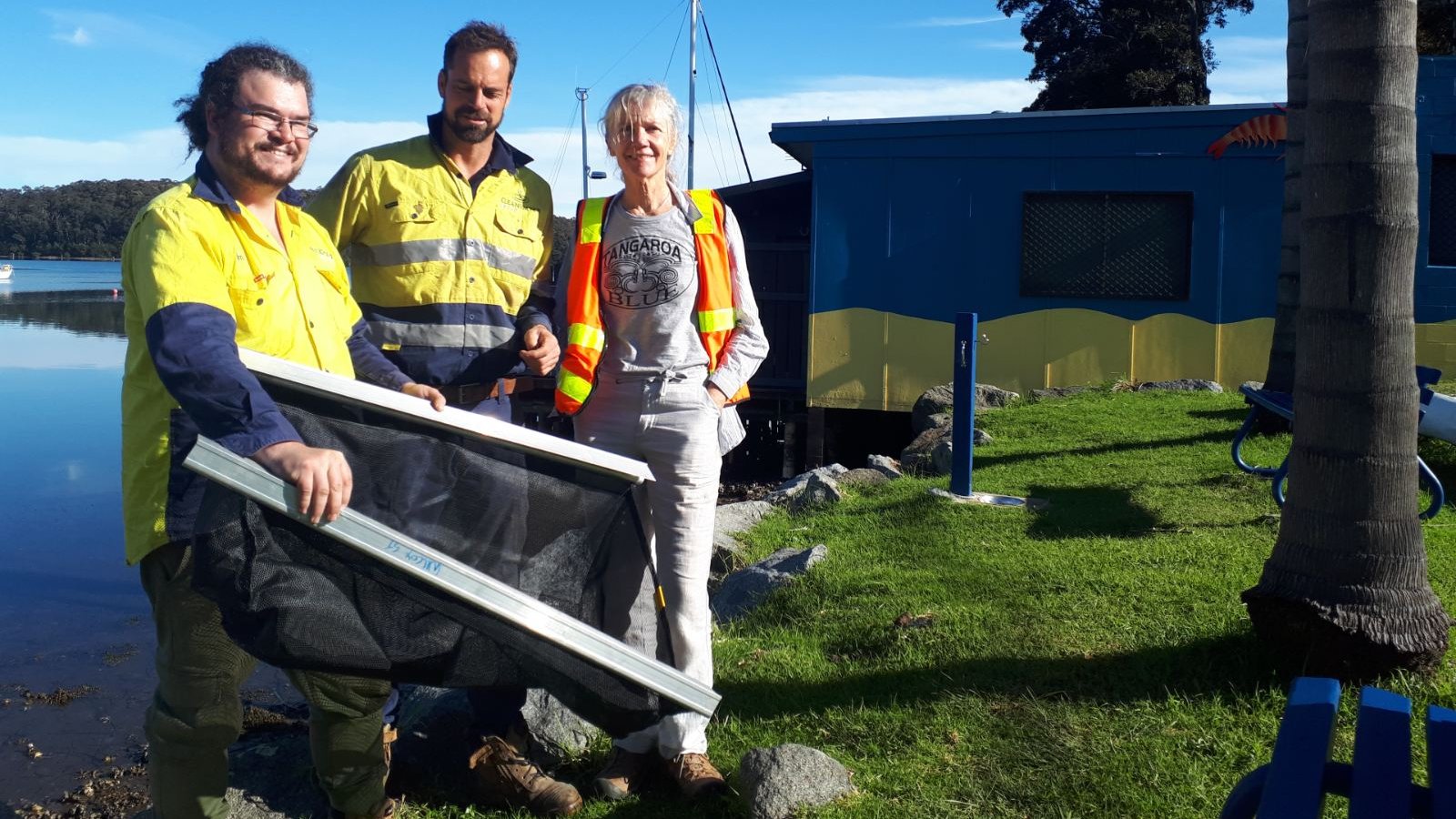
More information
Contact us
If you need more information about our Drain Buddy Program, please contact our sustainability education officers:
Australian Marine Debris Database
The Tangaroa Blue Foundation hosts the Australian Marine Debris Database. The database allows debris collectors to log each debris item they find. Having a national collection helps record objective data about the issue. It also gives us a better understanding about trends and movements of marine debris. This allows groups across Australia to collaborate on bigger solutions.
We use this data to find out where the debris is coming from. We can then work to prevent the debris from entering the marine environment in the first place.
Get the app
You can now download the Australian Marine Debris initiative app to use on your Android or Apple devices. Get the app from the:
How to use the app
Find out more about the app and how to use it in Australian and international research on the Tangaroa Blue Foundation website.
This short video will also show you how to use the app to collect data:
Get involved
To get involved with local marine debris clean-up activities, contact Council's sustainability education officers:

